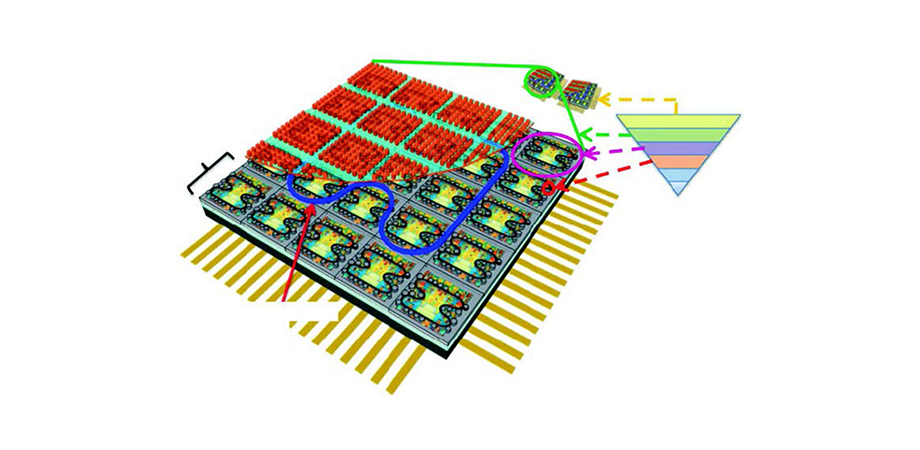Photonic Chips for Neuromorphic Computing

An emerging technology known as neuromorphic computing manipulates information in a way that mimics biological neurons communicating in the brain. This new computing approach could offer speedups for many types of computing tasks. At SPIE Photonics West, Bhavin Shastri of Queen's University gave an overview of the progress to build a photonics-based neuromorphic computer.
The basic building block of a neuromorphic computer is a so-called neuron, a hardware component that communicates with other neurons via spikes of some type of signal. IBM, for example, unveiled a neuromorphic computing chip called Loihi in 2017 that uses spikes in electric signals. A photonics-based neuromorphic computer, on the other hand, would encode information in spikes of light intensity, transmitted between so-called optical neurons.
The field of photonic neuromorphic computing began several decades ago, first with bulky optical neurons based on large optics that communicated in free space. At the time, however, the technology was overhyped and developers were unable to deliver on expectations. Research into these devices has resumed in the last decade, with experts being able to fit the optical neural networks on chips in 2016. One motivation to build photonics-based neuromorphic computers is that they can execute neural networks, a basic machine-learning algorithm, much more quickly than electronics-based computers. Photonics-based chips can perform key components of these algorithms on a nanosecond time scale rather than electronics' millisecond time scale.
Shastri's group has developed a neuromorphic computing chip, millimeters per side, that is based on integrated silicon photonics and contains hundreds of optical neurons connected via waveguides. These neurons can then be connected to form an optical neural network. The neural network would weigh the inputs of multiple neurons by a set of factors, sum them together, apply a nonlinear activation function, and evaluate whether the final value surpasses a certain threshold before sending the signal to another set of neurons.
The chips could accelerate a range of computing tasks. Shastri pointed out its potential applications in high-performance computing, edge computing for image processing, and wireless signal processing. They also could be applied to solve nonlinear optimization problems and partial differential equations.


